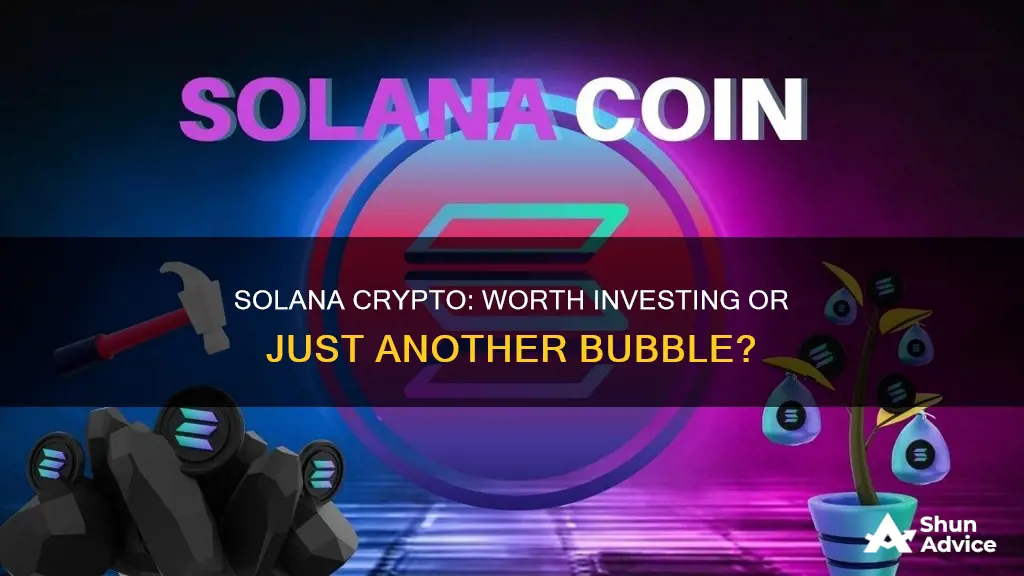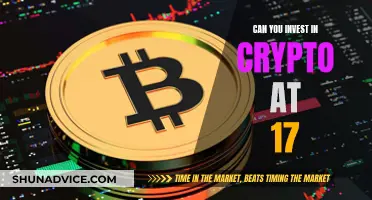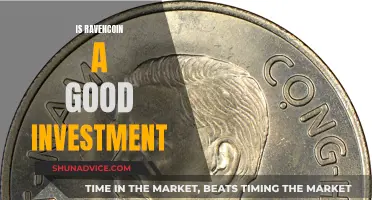
Solana (SOL) is a cryptocurrency that was designed to work similarly to Ethereum and improve upon it. It is a blockchain with striking resemblances to Ethereum and is frequently referred to as an Ethereum killer. The Solana blockchain uses a proof-of-history consensus mechanism, which uses timestamps to define the next block in the chain. This is in contrast to proof-of-work algorithms used by most early cryptocurrencies, such as Bitcoin and Litecoin, which are slow and resource-heavy.
Solana has experienced both success and challenges since its launch in 2020. It reached an all-time high of $260 in November 2021 but suffered during the 2022 bear market, with its value declining over 90%. However, it has since demonstrated an ability to rebound, with its price above $132 as of September 12, 2024.
Solana has a number of advantages, including its ability to process transactions quickly, its low fees, and its support for decentralised finance (DeFi) and non-fungible tokens (NFTs). It has become the go-to platform for many DeFi applications and has a widespread and active user base. However, it also faces challenges such as network congestion and competition from other blockchain platforms.
Overall, Solana is considered a good long-term investment by some, with a potentially bright future. Its price is expected to continue to increase and could surpass the $1,000 mark by 2030. However, it is important to remember that the cryptocurrency market is highly volatile and investing in Solana comes with risks.
What You'll Learn

Is Solana a good long-term investment?
Solana (SOL) is a cryptocurrency that was designed to work similarly to Ethereum and improve upon it. It is a blockchain with striking resemblances to Ethereum and is frequently referred to as an "Ethereum killer".
Solana was launched in March 2020 and has become a popular crypto, ranking as the 5th largest coin by total market capitalization as of September 2024. It has gained traction and widespread popularity in the last few years, attracting the attention of many investors.
Solana's price history has been volatile. It reached an all-time high of around $260 in November 2021 during the crypto bull run. However, the 2022 bear market caused the value of SOL to decline over 90%, and the collapse of FTX, a cryptocurrency exchange with ties to Solana, triggered a sharp decline in SOL's value. Despite these challenges, Solana demonstrated an ability to rebound, with its price rising above $120 by the end of 2023. As of September 2024, SOL is trading above $132, reflecting the underlying strength and improvements within the Solana network.
Looking ahead, Solana's trajectory appears optimistic. Its ability to match or surpass Ethereum in terms of decentralized finance (DeFi) and non-fungible token (NFT) sectors indicates a robust and scalable infrastructure capable of handling significant transaction volumes. By addressing the scalability and security issues of the blockchain trilemma, Solana offers exponentially faster transaction speeds than Ethereum and Cardano at a fraction of the cost.
Solana's unique selling point is its Proof-of-History consensus mechanism, which timestamps each block to maintain system security and enable faster computations. This, combined with its delegated proof-of-stake mechanism, allows for increased scalability and lower environmental and monetary costs.
Analysts' predictions for Solana's price vary. Some sources suggest that SOL will reach a new all-time high by the end of 2024, surpassing $290. By 2027, SOL is expected to reach a new high of $600, driven by mainstream adoption of its dApps, and it could surpass the $1,000 mark by 2030. However, it's important to note that cryptocurrency markets are highly volatile and unpredictable, and past performance does not guarantee future results.
In conclusion, Solana has a good long-term future due to its high scalability, low transaction costs, and robust ecosystem. Its growing adoption, strong developer community, and strategic partnerships further enhance its potential for sustained growth. However, investors should carefully consider their risk appetite, investment horizon, and belief in Solana's technological and market potential before deciding to invest.
Strategies for Investing in Crypto Without Any Money
You may want to see also

What is the utility of the SOL token?
The SOL token has multiple utilities within the Solana ecosystem. Firstly, it can be used as a governance token for voting on the future of the network. Secondly, it can be staked for delegation purposes, allowing holders to earn rewards for supporting the network. Finally, SOL is used to pay for processing fees on the network, including for validating smart contracts and using Solana as a non-fungible token (NFT) marketplace.
SOL tokens can be bought and sold on major cryptocurrency exchanges such as Binance, Coinbase, and Kraken. They can also be stored in crypto wallets, either offline or online, with the safest option being offline storage in a cold wallet.
The Ultimate Guide to Investing in Ethereum and Bitcoin
You may want to see also

What are the risks of investing in Solana?
Investing in any cryptocurrency, including Solana, is a highly volatile and risky endeavour. It is important to understand the risks involved before investing in Solana. Here are some of the key risks associated with investing in Solana:
- Market volatility: The cryptocurrency market is known for its high volatility, and Solana is no exception. The price of Solana can fluctuate significantly, and investors could face substantial losses if the market turns bearish.
- Regulatory risks: Cryptocurrencies are subject to regulatory changes, which can impact their value. For example, in 2023, the SEC accused Solana of being an unregistered security, creating uncertainty for investors.
- Competition: Solana operates in a highly competitive market, with other blockchains such as Ethereum and Cardano offering similar features. The success of competing platforms could impact the demand for and price of Solana.
- Network congestion: Solana has faced issues with network congestion in the past, which has resulted in failed transactions and frustrated users. If these issues persist, it could hinder the adoption of Solana and drive users towards alternative platforms.
- Centralization concerns: Solana has been criticized for sacrificing decentralization in favour of scalability. This could create security risks and impact investor confidence in the long run.
- Stablecoin volume decline: There has been a significant decline in Stablecoin volume on Solana since January 2024, possibly due to manipulated data. This could impact the stability and liquidity of the Solana ecosystem.
- Uncertain future: The future of Solana is uncertain, and it is difficult to predict how the platform will evolve and adapt to changing market demands. Additionally, the leadership of Solana has yet to be tested by significant challenges, and there are questions about the sustainability of its architectural choices.
- FTX estate deal: The $7.5 billion FTX estate deal has created an additional headwind for Solana. Investors who purchased locked SOL tokens at a low price may sell them on the open market upon unlock, creating downward pressure on the price until all unlocks are completed in 2028.
- Dependence on speculation: Solana's price has been influenced by speculation and hype in the past. A shift in market sentiment or a decline in speculative activity could negatively impact its price.
While Solana offers several advantages, including high transaction speeds and low fees, investors should carefully consider these risks before investing. It is crucial to conduct thorough research and consult with a financial advisor to determine if Solana aligns with your investment goals and risk tolerance.
The Crypto Investment Guide: Strategies for Success
You may want to see also

How does Solana compare to other cryptocurrencies?
Solana (SOL) is a cryptocurrency that was designed to work similarly to Ethereum and improve upon it. It is frequently referred to as an "Ethereum killer". Like Ethereum, the SOL token can be bought on most major exchanges. However, there are some key differences between the two.
Solana uses a unique blend of proof of history and delegated proof of stake, which offers exponentially faster transaction speeds than its closest competitors, Ethereum and Cardano (ADA), at a fraction of the cost.
The Solana blockchain uses a proof-of-history consensus mechanism. This algorithm uses timestamps to define the next block in Solana’s chain. In contrast, most early cryptocurrencies, such as Bitcoin and Litecoin, use a proof-of-work algorithm to define the blocks in their chains. Proof of work uses a consensus mechanism that relies on miners to determine what the next block will be. This is slow and resource-heavy, leading to high energy consumption.
Solana’s Delegated Proof of Stake
Solana uses a mixture of time-tested cryptographic strategies and fresh innovations to address the shortcomings of crypto’s first-wave solutions. It is powered by its unique combination of proof of history and delegated proof-of-stake algorithms. The main problem Solana was attempting to solve was Ethereum’s scalability issues.
Solana brings users several advantages with its delegated proof-of-stake mechanism. The history algorithm adds a layer of security to the network. In essence, Solana addresses two out of three issues identified by Ethereum co-founder Vitalik Buterin in his blockchain trilemma: scalability and security.
The speed with which the Solana platform performs computations allows for increased scalability. The environmental and monetary costs of Solana’s systems are lower, which further contributes to its scalability.
The Solana blockchain has seen growth across a wide range of metrics, including an increase in its average market cap, quarterly revenue, daily fee-paying customers, and funds raised.
Ethereum and Solana hold some things in common but also have stark differences. Here is a breakdown of where the two platforms overlap and where they diverge:
- Decentralized Finance Applications (dApps)
- Smart contracts
- Institutional and consumer interest
One of the most compelling narratives around Solana’s rise is its increasing dominance in the decentralised finance (DeFi) and non-fungible token (NFT) sectors. Solana’s ability to match or even surpass Ethereum in these critical aspects of the blockchain economy indicates a robust and scalable infrastructure capable of handling significant transaction volumes.
Solana has become the go-to platform for meme coin launches and trading activity over the past 12 months, with hundreds of new coins launching every day. This may indicate that Solana has successfully positioned itself to be a core component of the memecoin craze.
However, it is crucial to consider the challenges and trade-offs that have accompanied Solana’s growth. When considering the blockchain trilemma, it is clear that Solana has sacrificed decentralisation for scalability.
Solana has a lot of potential and is definitely a cryptocurrency to keep an eye on. It has a strong roadmap for future development and has become a crucial place for memecoin traders and retail users. However, it is always important to do your own research and carefully consider your investment goals and risk tolerance before investing in any cryptocurrency.
Dah Coin: A Good Investment Option?
You may want to see also

What is Solana's price prediction for 2025?
Solana (SOL) is a cryptocurrency that has gained traction and widespread popularity in the last few years. Its price has soared and dipped dramatically since its initial coin offering in April 2020, reaching an all-time high of $260 in November 2021 before falling below $10 in late 2022. As of September 2024, the current price of Solana is around $143 to $180.
So, what is Solana's price prediction for 2025? According to various sources and technical analyses, the price of Solana is expected to increase by 2025. Here are some specific predictions:
- The maximum expected price of SOL in 2025 is predicted to be around $208.67, with a minimum of $142.69, and an average trading price of $274.65.
- One source predicts that SOL could reach a maximum of $750 by the end of 2025.
- Another source mentions that SOL could reach $500 by the end of 2024 and may continue to grow in 2025.
- A more conservative prediction states that SOL could reach a maximum of $345.45 and an average of $311.66 in 2025.
It is important to note that these predictions are based on current trends, technical analyses, and historical data. The cryptocurrency market is highly volatile and unpredictable, so it is challenging to accurately predict Solana's price for 2025.
Bitcoin in India: A Smart Investment?
You may want to see also
Frequently asked questions
Solana is a good long-term investment. Its innovative technology and active ecosystem have captured the attention of investors looking for new opportunities in the blockchain space.
Solana's unique selling point is its Proof-of-History consensus mechanism, which timestamps each block in a way that maintains the system's security. This enables the data to be accurate and fair.
SOL tokens are used as governance tokens for voting, staked for delegation, and to pay for processing fees. They can also be bought, sold, and traded on exchanges.
Solana's price is predicted to reach a minimum value of $140.32 and a maximum value of $156.88 in 2024. The average trading price is expected to be around $173.44.
Solana's price is projected to reach a minimum of $906.29 in 2030. The maximum price is expected to be $1,596, with an average forecast price of $1,366.







